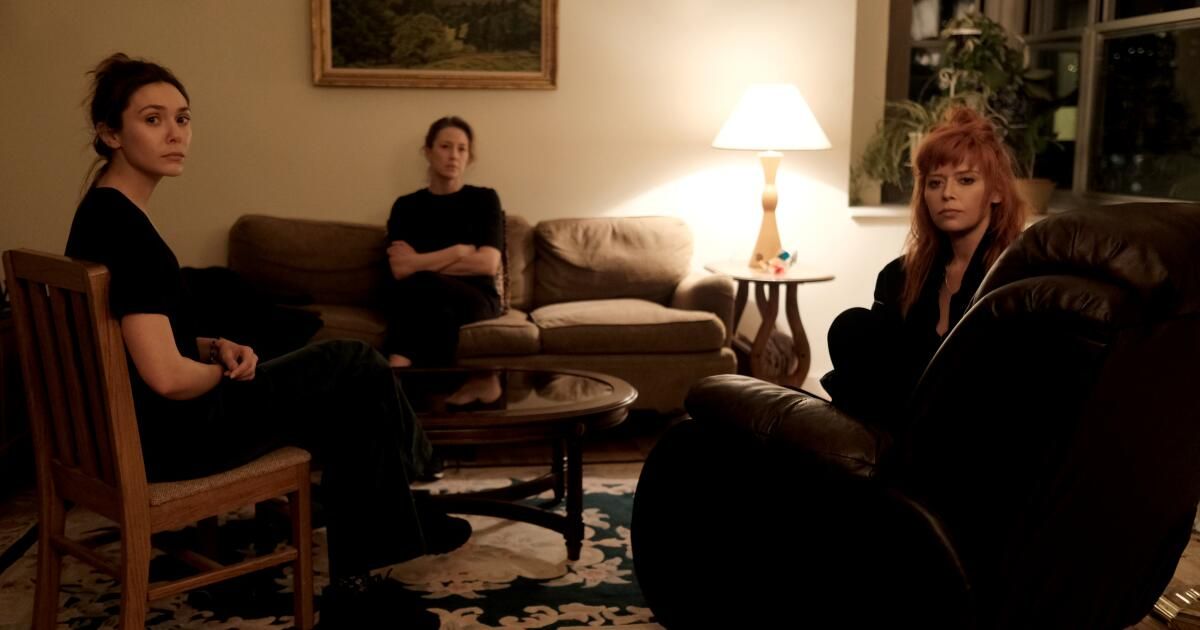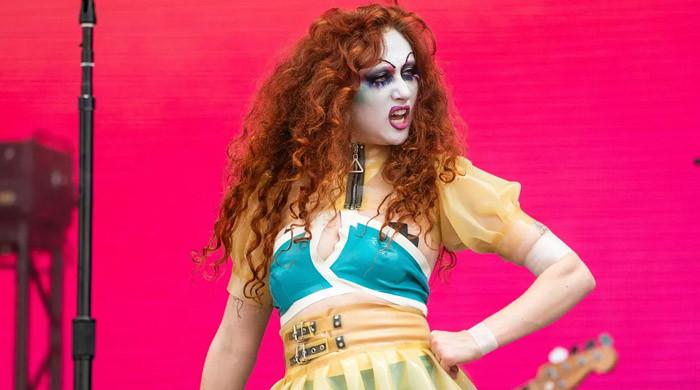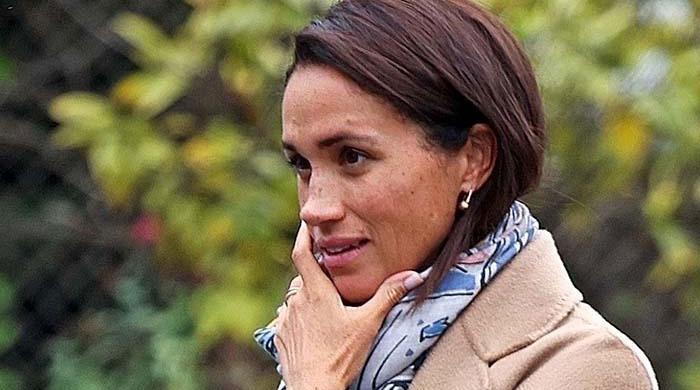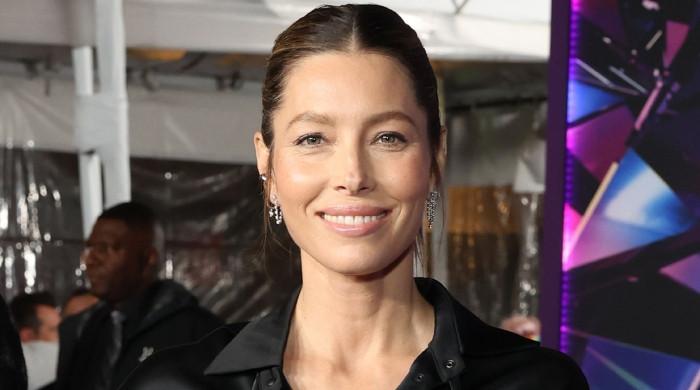Set in a small New York apartment where two estranged adult sisters await their father’s final breath, writer-director Azazel Jacobs’s “His Three Daughters” is no farce. But within its measured, melancholy pace, it packs a healthy dose of uplifting humor. As this claustrophobic indie film (one of the year’s best) makes exquisitely clear, there’s no easy way to pre-grieve, especially when dysfunction is the dominant language.
There’s a masterclass in acting to be savored, as you might expect from a cast that includes Carrie Coon, Elizabeth Olsen and Natasha Lyonne, each in the prime of her career. Separately or together, they seamlessly deliver an alternately discordant and poignant piece about family fractures that, in the hands of Jacobs, a veteran of unnerving empathy (“Terri,” “The Lovers”), rarely falters.
Coon is the mainstay of this chamber trio as the eldest sister, Katie, a restless, controlling mother of a troubled teenager (whom we never see, only hear about) and bulldozer-like qualities. In the grim circumstances of her father's failing health (whom we briefly glimpse as Jay O. Sanders), Katie maintains a sour commentary on what's wrong and what's always bothering her, but also on why it's not her fault, but will invariably be her cross to bear.
Though naturally prickly, she gets along well enough with Christina (Olsen), also a married mother and the group's whiny violinist. Christina has traveled the farthest (West Coast), but with her ethereal, regretful, hippie air (she has that motherhood-is-a-gift vibe) she seems less connected to the reality of the swirling tensions. Most of Katie's negative energy is directed toward her drug-addicted stepsister, Rachel (Lyonne, the cautious violinist), Dad's adopted daughter from his second marriage.
Katie sees Rachel as little more than a useless slacker hoping to claim the apartment, even though Rachel had been the live-in caretaker before things changed. Rachel will fight back if cornered (and Lyonne’s raspy acidity is, as always, a delight), but she’d rather lock herself in her room, smoke out her pain, and keep track of her sports bets than play dutiful sister/daughter — at least not in a way that would fuel Katie’s overbearing criticism or Christina’s diplomatic attention.
In this vibrant, believable setting, everyone is so fragile that it’s easy to identify with them, and at the same time, they bear their fragility in such unique ways (again, what a cast!) that, in a sense, all Jacobs needs to do is let what’s there breathe. But we also sense that, in this dire finality, there’s a healing intimacy just around the corner, if only alignment can be found. Those glimmers of hope create an appealing background hum.
Despite having only one indoor location, “His Three Daughters” (skillfully photographed by Sam Levy and edited by Jacobs) never feels like a filmed play. We are inside it, sensing the unresolved situation of past and present in this modest, inhabited place. The strange electricity of waiting is transmitted in every shot, whether it has one, two or all three protagonists in the frame.
Toward the end, as the moment of rapprochement approaches, Jacobs surprises with an unexpected, bold, and somewhat fanciful twist, foreshadowed by a story Christina tells that reveals how her twice-widowed father felt about death. It’s an unexpected twist, to be sure, and it seems like it shouldn’t work. But somehow (because it’s so wonderfully written) it does, landing with affection and grace in a description of a turbulent, stumbling few days.
'His three daughters'
Classification: R, for language and drug use
Duration: 1 hour, 43 minutes
Playing: In limited release; on Netflix on September 20












